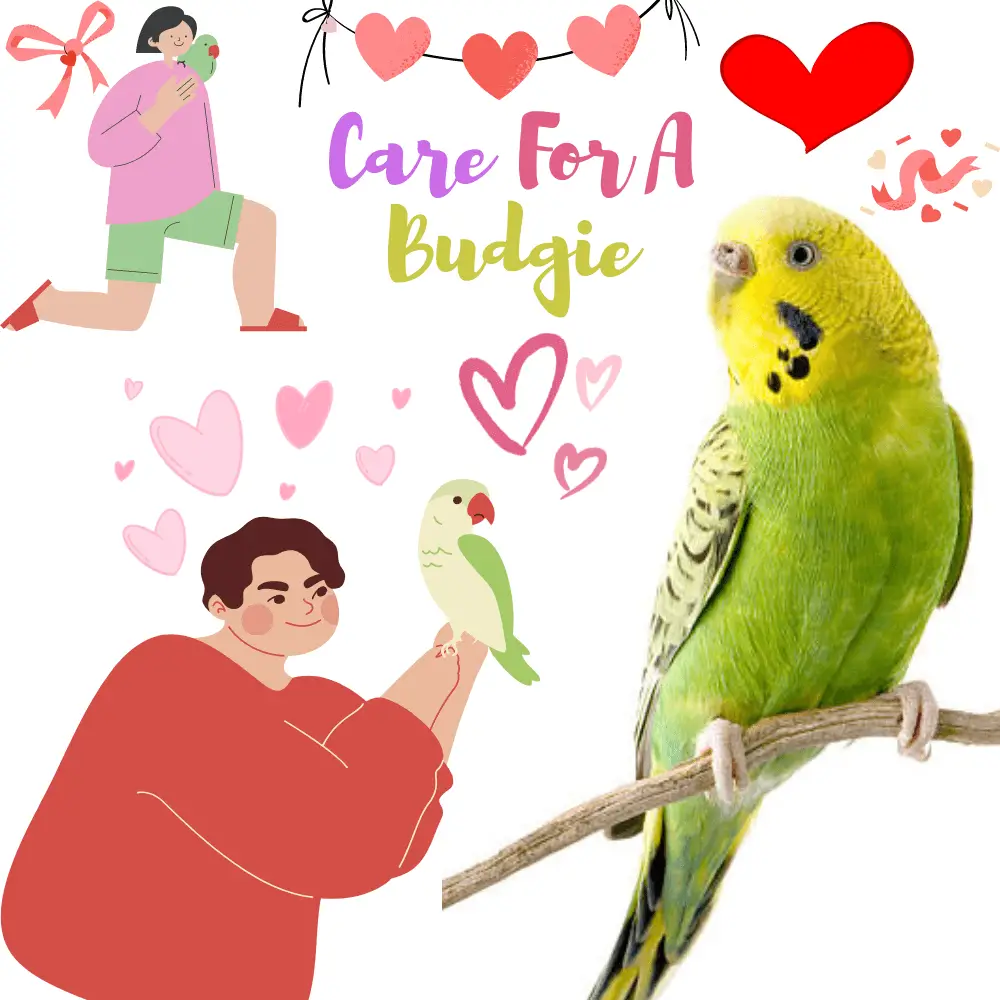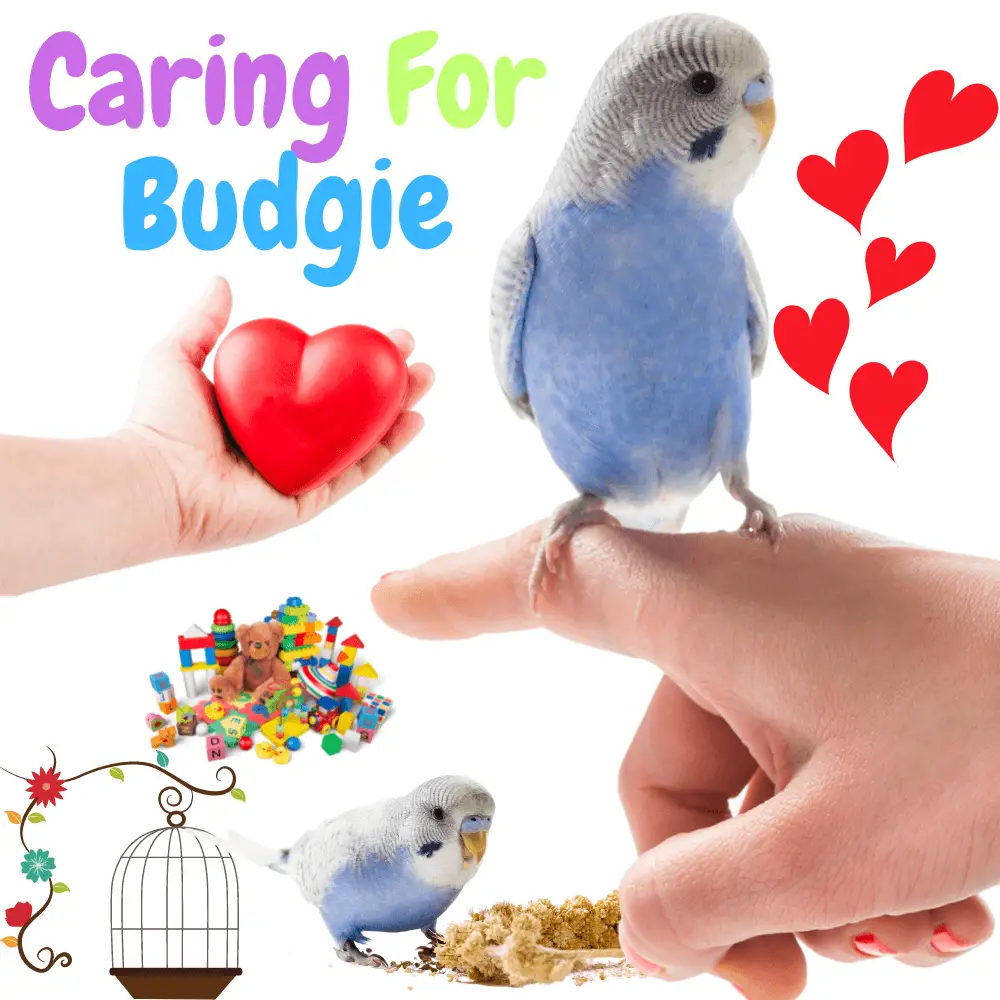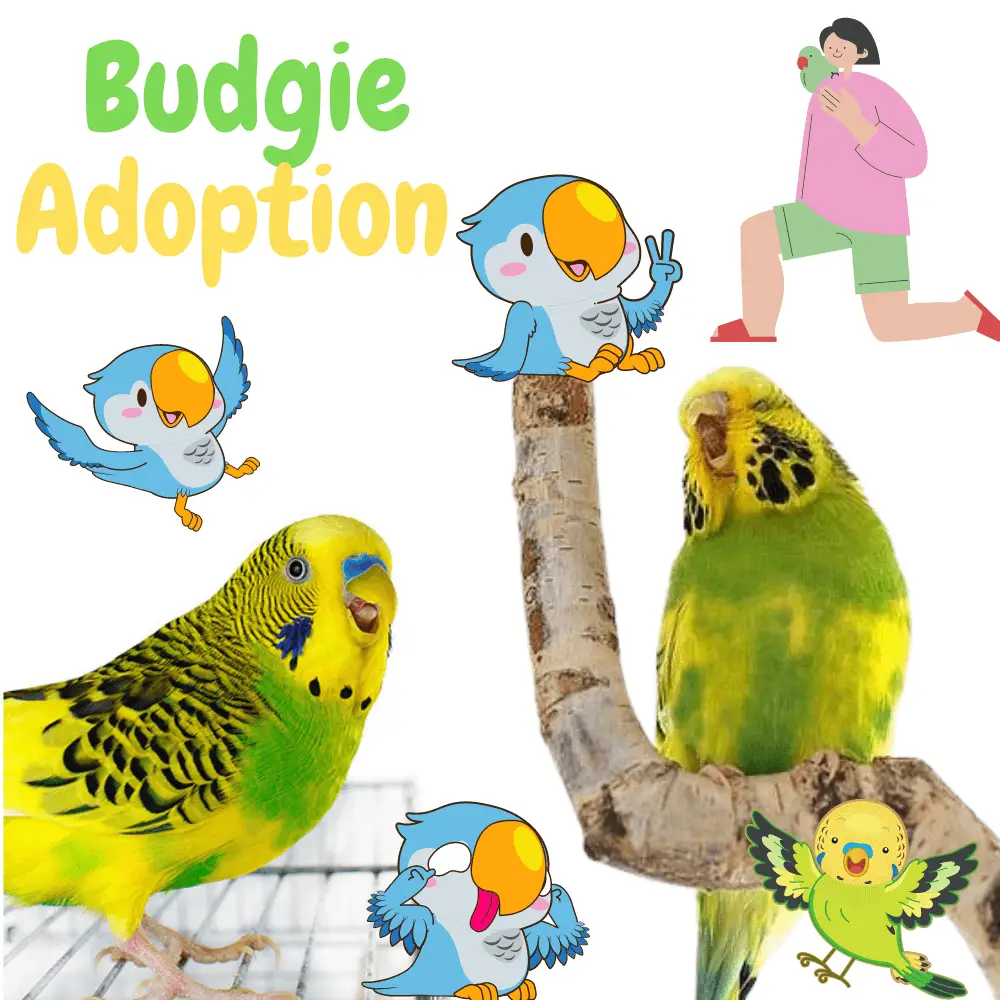
Take Care Of A Budgie At Home: Even if they are not endowed with advanced intelligence like that of parrots, parakeets can well be domesticated. If you take care of them well, they are able to learn a lot. We will talk about the different steps to follow to raise a parakeet. But before that, let’s take a close look at the characteristics of this little bird.
What is a budgie?
All you need to know about this little parrot
Features
The parakeet is a small, colorful bird that belongs to the category of parrots. She can become an excellent companion. In addition, with their exotic appearance, budgies are increasingly in demand. Its olive-colored beak is a little curved like that of a parrot. They are distinguished especially by their brightly colored plumages with black stripes on the head and wings.
Unlike parrots, they have long tails. At present, there are about 60 species of parakeets, including the Ring-necked Parakeet, the Catherine Parakeet, the Wavy Parakeet, and the Australian Parakeet. Generally speaking, the size of the budgie is 18-24 cm with a weight between 25 and 45 g.
Behavior
Parakeets are rather intended for breeding. True, budgies can be good pets, but they are also able to live in nature. Unlike parrots, budgies do not need to get out of their birdcage from time to time or do regular exercises. On the other hand, the parakeet cannot speak like parrots with the exception of some males. But learning requires know-how and a lot of patience.
On the other hand, the parakeet is one of the species of birds capable of producing particular sounds. When the budgie sings, it means that it is doing well. The parakeet song is pleasant to hear. When they sing, they tend to imitate surrounding sounds like phone ringtones, TV sounds, music, etc. When this bird screams, it means that something scares it or that it is in a bad mood.

Feeding
The diet of the parakeet consists mainly of seeds, cereals, sprouted seeds (rich in vitamins A, B, and C), dry seeds, milky seeds (wheat, corn, buckwheat, barley), and shoots. The seeds that the budgie appreciates the most are oats, buckwheat, millet, and flax.
However, it is necessary to balance your diet by giving him granules. Otherwise, it may be deficient in vitamins and minerals. Blue parakeets can also eat fruits and vegetables (spinach leaves, endives, apples, kiwi, carrots, pumpkin, ), almonds, walnuts, pistachios, hazelnuts, peanuts, rice, chia, squash, sesame, flowers, or cuttlefish bone (rich in calcium).
Anyway, they can eat a variety of foods as long as they are healthy products such as noodles or cooked eggs. Also, the little budgie must always have clean and fresh water at its disposal. In short, the diet of the budgie must be both rich in vitamins, minerals, trace elements, calcium, fiber, and protein. Indeed, a good diet is one of the necessary conditions for the budgie to have a long lifespan.
The lifespan of a budgie
True, parakeets are known to be fragile birds, yet they can live as long as parrots. The lifespan of a budgie varies between 12 to 15 years, or even 20 years if it is well cared for. Indeed, the Wavy Parakeet can live for 12 years on average, the White Parakeet: 15 years, and the Collared Parakeet: 30 years.
As for wild parakeets, their lifespan is about 5 years. This is because wildlife is often exposed to predators. On the other hand, parakeets in captivity have access to quality food. As for the reproduction of the wavy parakeet and its management, it can only reproduce for 1 year regardless of sex. During mating periods, males tend to sing much more to impress females. They feed them by the beak while they lay the eggs.
The first laying often begins after 4-8 days after mating. A female can lay 5-10 eggs at the rate of one egg every 2 days. Then it is the female who incubates the eggs for about 18 to 20 days or even longer. At birth, baby parakeets are first fed by their mother who will in turn be fed by the male. The formation of plumage will be complete only from the 4th or 5th week after birth. The first flights start during the first 2 months.
Parakeet diseases
Despite their small size, budgies are hardy. They can stay healthy for a very long time if they are well nourished. Angel wing syndrome is precisely a disease caused by poor diet. Added to this is the chlamydia that is often seen in yellow ring-necked parakeets. Generally speaking, the sick parakeet tends to sleep a lot. Otherwise, she keeps her eyes closed and doesn’t eat enough. Other diseases can result in discoloration of plumage and change in breathing. These include, for example, scabies, mycosis, and salmonellosis.
and salmonellosis.
How to raise a budgie?
All you need to know about Budgie
The choice of a budgie
Before buying a budgie, it is advisable to check certain criteria. Make sure it is dynamic with well-colored plumages and a very keen eye. You are free to choose between a female and a male. Moreover, the price of a budgie does not depend on the sex of the bird. Nevertheless, if you prefer to have a bird that can talk, it is better to take a male.
The difference between the latter and a female is that the male is characterized by light blue wax. The female parakeet, on the other hand, is distinguished by its brown-beige wax. Anyway, take a younger animal. Thus, you will have plenty of time to educate him to make him a singing parakeet and a good pet.
The choice of the cage
You also have to choose your cage well. The dimensions of the latter must be compatible with the size of the bird. Care must be taken to ensure that the budgie has enough space to do exercises from time to time. Prefer rectangular cages so that she can fly and move as she pleases. If you plan to have several couples, it is better to opt for an outdoor aviary for budgies. When choosing your bird’s cage, make sure it is easy to clean and maintain.
Indeed, in order to avoid infections and the formation of diseases, the cage must remain clean. Remember to disinfect it to remove microorganisms and viruses. To do this, you only have to use a detergent or dishwashing liquid, it will do the trick with a sponge. To reach the nooks and crannies of the cage, use a toothbrush.

Essential accessories
Other accessories are essential to ensure the well-being of these animals namely drinkers, feeders, bathtubs, perches, and playgrounds. Thanks to the drinkers, the budgie will always have access to drinking and fresh water. Otherwise, install a small water fountain inside the cage. As for the feeders, there are some that are made of plastic, ceramic or stainless steel.
If you want to put your bird outside, do not hesitate to make a thermal mower comparison so that you can maintain your exterior for the well-being of your bird. Bathtubs will allow the budgie to hydrate and have fun knowing that baths have the function of enhancing the beauty of the plumage. You can use apple, pear, or bamboo branches to serve as perches. It is also possible to add cotton ropes or small ladders.
Care
For nail care, avoid using perches covered with sand, contrary to what some people think. On the contrary, it could be dangerous for the skin of the bird. To be able to properly trim the nails, it is better to carefully hold the budgie, preferably in a clean cloth. Use a nail clipper while avoiding cutting veins. At first, it is better to do it in pairs since it is a very delicate operation.
The same is true for the way it is fed. To start, first, use your hands to get used to it. In this way, you will be able to adjust the amount of budgie food if necessary. You can choose whether or not to trim your bird’s wings. Some people think that by clipping its wings, it will be easier to tame it. On the other hand, a parakeet with trimmed wings will have trouble flying. So it’s up to you to choose what lifestyle you want to bring to your budgies. However, many breeders find it prudent to trim the wings of the parakeet to reduce the chances of it escaping.




















